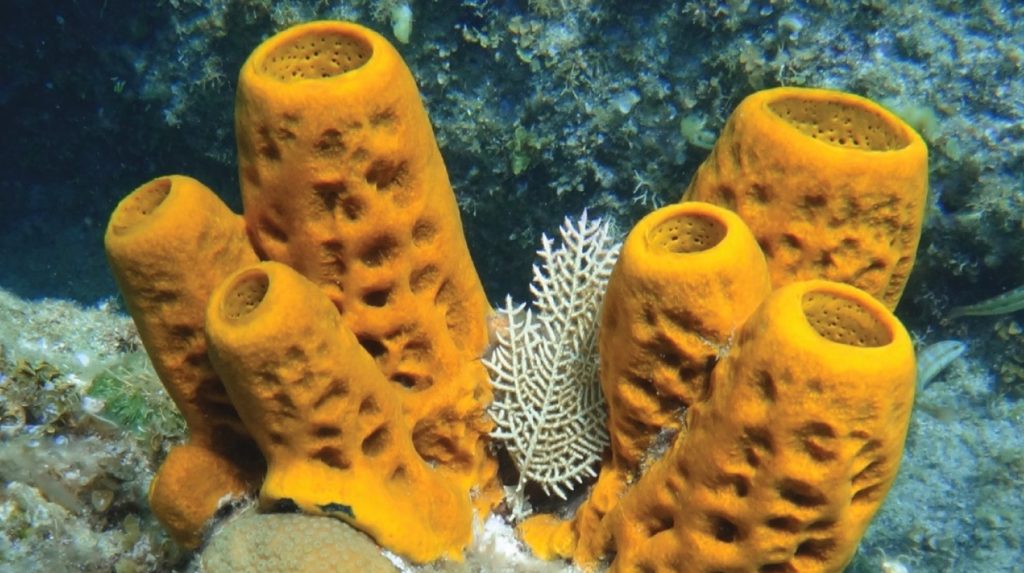
Fat atoms credited to antiquated ocean wipes really had a place with green growth, two new examinations propose.
A huge number of years back, one of the absolute first creatures on Earth passed on at the lower part of an antiquated sea. Throughout everyday life, it was a modest ocean wipe; in death, it had no bones, nor teeth, nor shell to abandon as proof of its concise, base dwelling presence. However, it had fat particles — or so it appeared.
In 2009, a gathering of a lot later creatures (human researchers) were examining a chunk of old ocean silt when they found the fossilized leftovers of what had all the earmarks of being those equivalent wipe fat atoms, caught among the stones. The silt dated to 635 million years prior — about 100 million years sooner than the most established affirmed creature fossil on record — however the antiquated atoms were obviously organic in birthplace, and coordinated those found in current wipes, the analysts composed. As increasingly more of these biomarkers were found across antiquated ocean bottom examples, an inquiry arose: How could these early wipes be so boundless, but not give up a solitary body fossil?
Presently, two new papers in the diaries Nature Ecology and Evolution give an answer. Those old fat particles didn’t come from a creature by any means, the analysts contend, but instead from some old, spoiled green growth whose sub-atomic remaining parts were changed by the attacks of geologic time. Subsequent to mirroring those geologic cycles in a lab analyze, the analysts effectively modified current green growth atoms into fats indistinguishable from those found in the antiquated silt.
“This all implies that the proof recently connected to the most seasoned creatures on Earth is gotten from green growth, not creatures,” Lennart van Maldegem, a co-creator of one of the investigations and a geoscientist at Australia National University, revealed to Live Science. “That moves the most established authoritative proof of creatures by very nearly 100 million years, to the fossil engraving of Dickinsonia, approximately 558 million years prior.”
Insider facts in the stone
The pivotal particle in every one of these investigations is a particular kind of sterol, or fat compound, called C30 24-isopropylcholestane — basically, a mass of fat enveloped by 30 carbon molecules. While a few sterols, for example, cholesterol, are far reaching among creatures (counting people), these novel C30 sterols are solely connected with demosponges — a different class of marine creatures that incorporates around 75% of all ocean wipes known on Earth.
At the point when the creators of the 2009 examination found a bounty of C30 sterols in 635-million-year-old silt tests, they deciphered it as proof that old ocean wipes had lived and kicked the bucket there, 1,000,000 centuries before Earth got loaded with creatures during an occasion known as the Cambrian Explosion (around 540 million years back). Notwithstanding, that isn’t the main conceivable understanding of those sterols.
“We know now that the primary green growth (the predecessor to current plants) got conspicuous in all the world’s seas 200 million years before the Cambrian Explosion,” van Maldegem said. “In this way, in our investigation we had one more glance at the particles saved in these old silt.”
Close by the sterols ascribed to wipes, the scientists likewise found a wealth of particles related with green growth, just as non-natural atoms that outcome from a land cycle called diagenesis, or the cycle that transforms grainy silt into hard shakes more than a huge number of years. Van Maldegem compared the cycle to preparing bread; in the wake of being presented to warmth and weight for countless years, an “irreversible compound response” changes the residue’s atomic structure, similarly as a warm stove changes wet, floppy mixture into a firm portion of bread. In some cases, van Maldegem stated, these cycles can adjust natural atoms also.
In the old silt tests, sterols related with ocean wipes and atoms created by diagenesis were frequently found right close to one another, proposing that the two particles had emerged by comparable geologic cycles, van Maldegem said. To test whether these cycles might have changed antiquated green growth particles into the privilege C30 sterols, the group eliminated different atoms from present day red and green growth tests, at that point warmed them to in excess of 600 degrees F (315 C) in a stove and presented them to serious weight — conditions intended to emulate land measures that regularly take a huge number of years.
The cycle effectively changed some green growth atoms into a similar wipe related sterols present in the 635 million-year-old residue. This implies that those antiquated sterols are not proof of creatures by any stretch of the imagination, however of green growth, van Maldegem said. On the off chance that that is the situation, the most punctual proof of creature life on Earth may have quite recently been nullified.
It’s as yet conceivable that creatures started advancing on Earth a huge number of years before this, van Maldegem stated, yet researchers should presently don’t look to these specific greasy wipe atoms as proof of this.
“We have had an exhaustive glance at the soonest proof for creatures on Earth and are picking up a superior comprehension for how the primary creatures developed,” van Maldegem said.

Gabriel Fetterman has been writing since an early age. When in school, he wrote stories plagiarized from what he’d been reading at the time, and sold them to his friends. This was not popular among his teachers, and he was forced to return his profits when this was discovered. After finishing his university studies with a B.S. in English, Gabriel took a job as an English teacher. During this period, Gabriel began a number of short stories.
Disclaimer: The views, suggestions, and opinions expressed here are the sole responsibility of the experts. No journalist was involved in the writing and production of this article.

